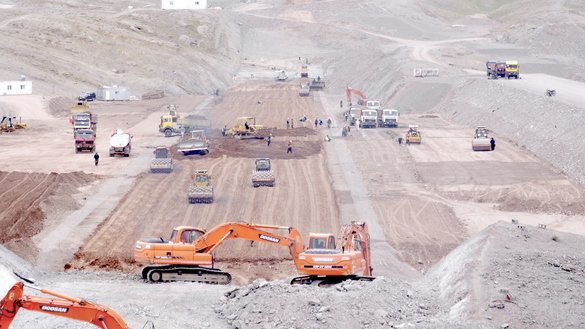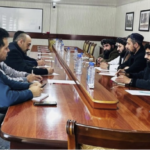The Afghanistan National Water Affairs Regulation Authority (NWARA) said Friday at least 85 percent of construction work on the Pashdan Dam has so far been completed.
The dam, which made the news earlier this month after being attacked by Taliban, is one of the National Water Affairs Regulation Authority’s key projects for this solar year.
Work on the dam, on the Hari River in Karkh district of western Herat province, started 10 years ago. Once complete it will hold 40 million cubic meters of water and will generate 2MW of electricity and irrigate at least 13,000 hectares of land.
Plagued by problems, construction work at the site stopped for three years before being resumed last year but in November, reports indicated that Taliban insurgents had warned officials and workers at the dam to stop work on the project.
The group reportedly told dam officials the project had not been approved by the Taliban, so work should be stopped – which did not happen.
But earlier this month, Taliban attacked the dam, killing three security personnel, and wounding one other. Four security personnel are still missing.
NWARA officials meanwhile said that once the dam is complete, water will be fed to Herat city, where it will be used to irrigate the greenbelt around the city and supply potable water to residents.
The Afghan government is funding the $117 million (8.9 billion AFN) project.
This is one of a number of dams currently under construction in the country – to not only provide water to local communities but also to help increase power supply.
Earlier this week, another key dam was inaugurated by President Ashraf Ghani and his two deputies, Amrullah Saleh and Sarwar Danish.
The Kamal Khan dam in southern Nimroz province, was widely welcomed by residents who will also benefit from irrigation canals to help water crops.
The Kamal Khan dam will not only generate at least nine megawatts of electricity for the local community but will also irrigate over 180,000 hectares of land.













